There is a tendency for destinations in Vietnam to fall victim to overdevelopment — with careless plumping down of Vinpearl resorts or large cable car attractions — but what I love about Phong Nha is that it’s happily avoided this fate.
This laidback riverside town situated among the limestone peaks in Quang Binh Province in central Vietnam made a name for itself for sustainable ecotourism. I just love its unhurried atmosphere and its nature-focus.
Known mainly for its nearby national park, which is home to dozens of caves that can be explored, it’s also just a lovely place to go for a relaxing time by the river or a taste of rural life in Vietnam.
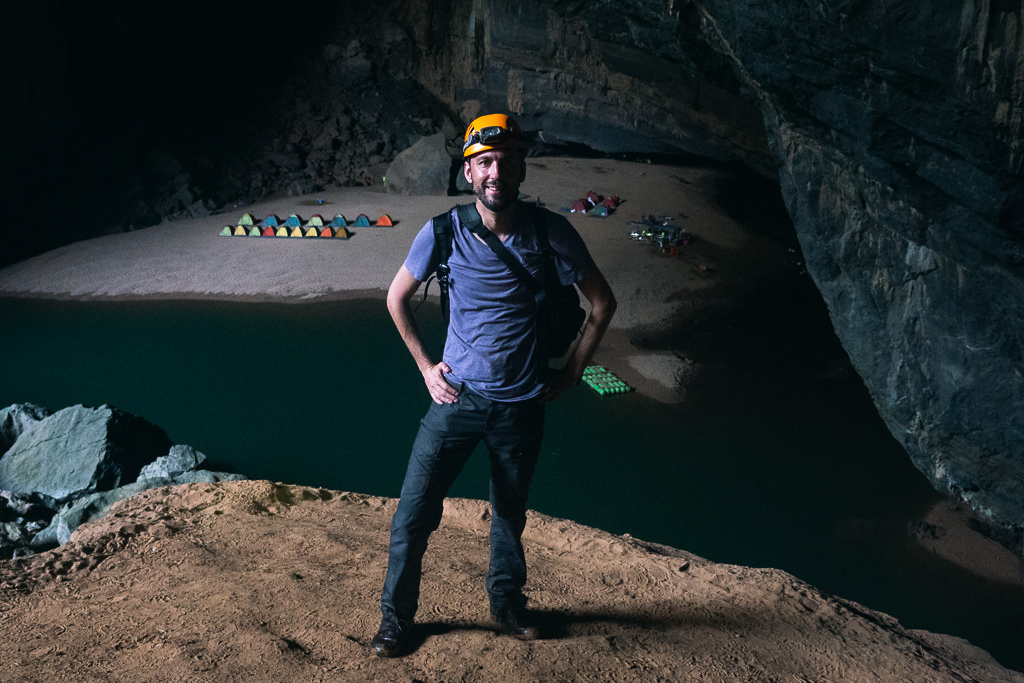
Quick tips for Phong Nha
- While you could visit on a one-day stopover, such as on this day tour from Dong Hoi, I recommend staying at least two days — more if hiking/trekking or doing an organized caving expedition.
- You can visit some small caves independently or with a short boat tour that costs only $7. The best caves can be seen only on organized trips which are mostly in the $100-$300 range with companies like Oxalis.
- Looking for a place to stay? If you’re backpacking, nab your bed now at Central Backpackers, which is the place to stay (reserve via Hostelworld or Booking). For a private bungalow with mountain views, look no further than Carambola Bungalows.
Why visit Phong Nha
Despite having some of the most amazing attractions in Vietnam and being located conveniently midway between Hue and Hanoi, the Phong Nha-Ke Bang National Park still manages to fly under the radar for many travellers.
But if you add it to your Vietnam itinerary, you’ll be rewarded with some stunning nature and a wonderful setting in the countryside.
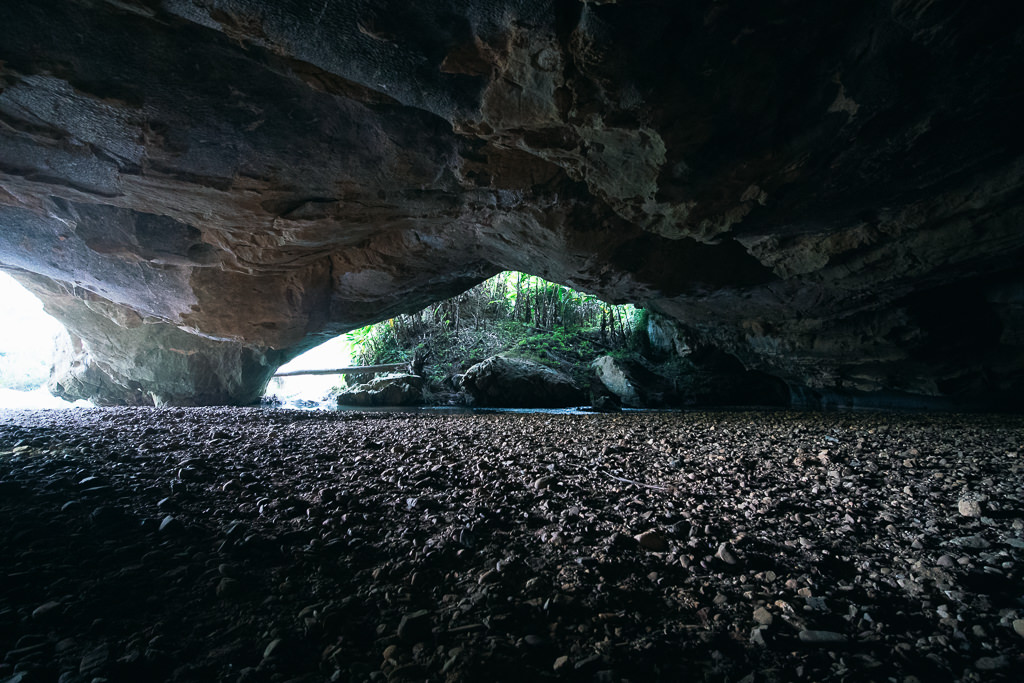
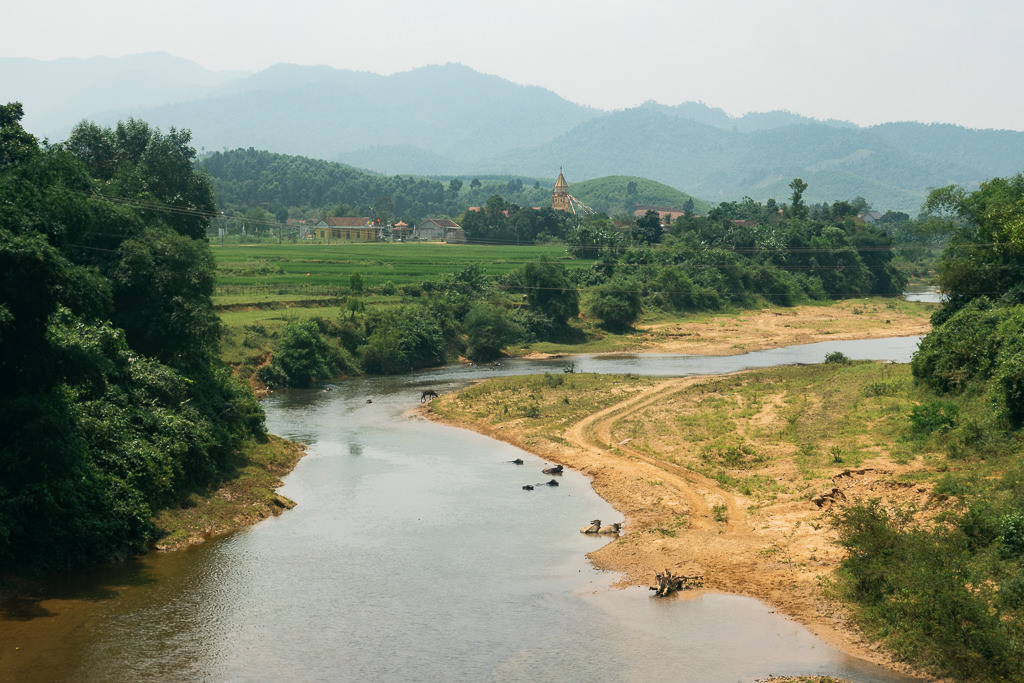
UNESCO World Heritage-listed since 2003, the national park is home to the world’s largest cave and Asia’s oldest karst mountains. There are over 500 caves with around 30 made accessible to visitors. They range from small caves with easy walkways to colossal caverns that can only be seen on organized spelunking trips.
Besides the caves, Phong Nha has plenty else to do:
- Rent a motorbike for the day and drive around the hilly roads
- Adventure activities like kayaking and ziplining
- Enjoy the peaceful riverside village of Phong Nha itself
- Go on a day hike or multi-day trek inside the national park
- Or relax at a farm in nearby Bong Lai Valley
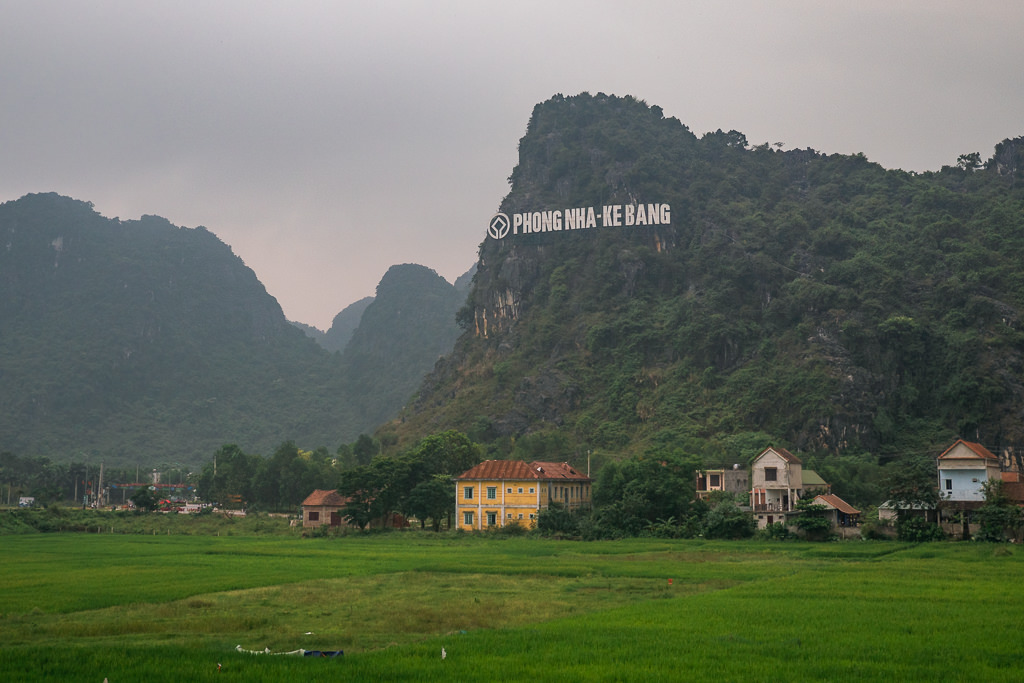
When to visit Phong Nha
You can enjoy Phong Nha National Park for most of the year, but it’s good to be aware of the flooding season from September to November.
Major floods are common during this time which even submerge some of the caves. The water level inside Hang En Cave can even rise by a whopping 80 meters, so it’s no coincidence that tours do not run during this period. Even the town itself is affected and you can find photos of travellers standing ankle-deep in water inside restaurants or hostel receptions, so I would just the flooding season completely.
I visited in March and most local sources seemed to agree that between February and August is the best time to visit.
Getting to Phong Nha
The main town in the Phong Nha National Park is called Son Trach, but it’s better known simply as Phong Nha village. You get there by first travelling to the city called Dong Hoi.
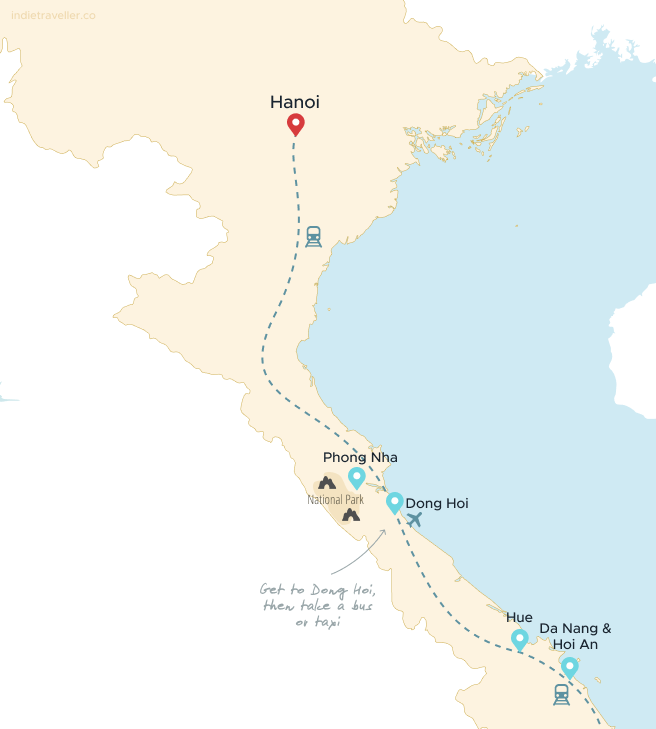
Train
The nearest train station is in Dong Hoi, about 45 km from Phong Nha. Dong Hoi is on the Reunification Express line that runs from Hanoi to Saigon, so many trains stop there throughout the day. You can book trains online at 12Go Asia or Baolao. You can jump straight to all train connections from Hanoi or from Ho Chi Minh City on 12Go Asia.
Bus
There are also buses from Hanoi to Dong Hoi, from Hue, from Da Nang, and Da Lat, among other places. You can book buses easily from hotel receptions or agencies in town, or online at 12Go Asia.
Air
The closest airport is Dong Hoi Airport with only a handful of flights. You can view all flights to Dong Hoi from Hanoi and flights from Ho Chi Minh City
Motorbike or car
Independent travellers arriving by car or motorcycle can take the Ho Chi Minh Highway or Hwy DT 20 which runs through the town.
Dong Hoi to Phong Nha
Dong Hoi is the regional transit hub. From there, you can take a public bus from Dong Hoi to Phong Nha that costs about 60.000 VND (it cannot be booked online).
You can also take a taxi, which should cost about 500.000 VND. The tour operator Oxalis can also arrange a private pick-up, at 650.000 VND, which is more expensive but could be convenient if you have booked a cave tour with them.
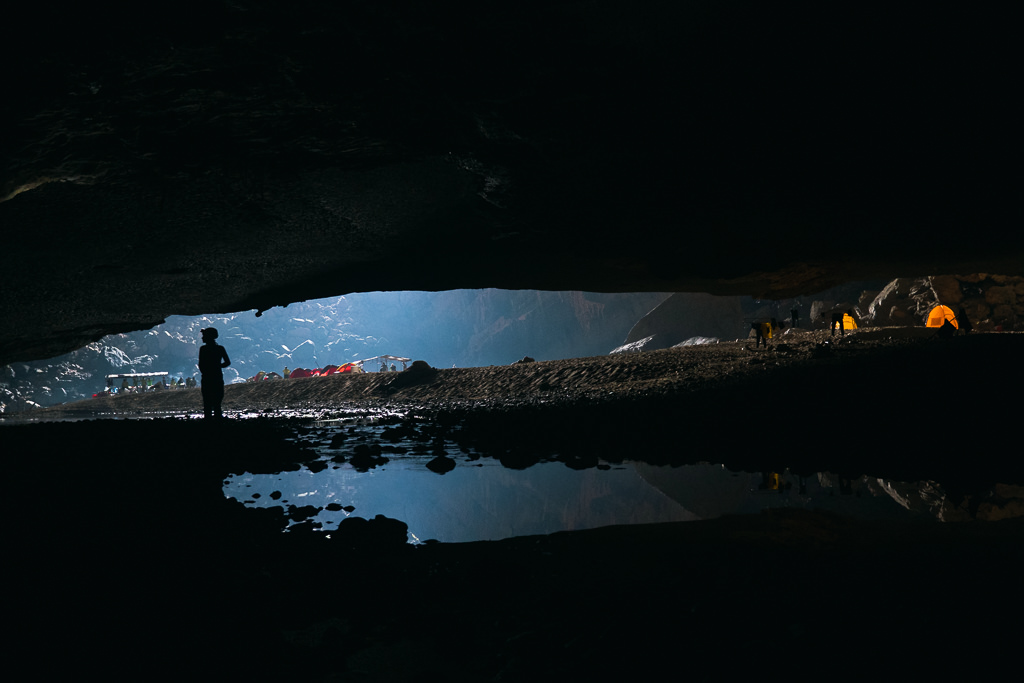
Phong Nha caves
There are a variety of caves in Phong Nha and each can give you a wildly different experience. I’ll cover some of the best-known caves here.
Some of the 400-million-year-old cave systems are publically accessible, letting you easily admire their beautifully lit mineral formations from boardwalk paths.
Other caves are more for the adventurous, letting you clamber and zip-line through them.
Others still lie deep within the national park, reached only through a multi-day expedition — and these are arguably some of the most rewarding.
Don’t have much time? Visit on a day tour!
I recommend staying at least 2 nights in Phong Nha. But if you don’t have enough time, you can also take a day trip from Dong Hoi before travelling onwards. You can easily book a tour at GetYourGuide or Viator.
The Phong Nha cave
Underground river cave toured by boat
Phong Nha cave, which lends its name to the park, makes for a great introduction. You’ll not only see the cave but will be rewarded with a nice boat ride down the Song Con river as well.
Simply head to the jetty at the end of the high street and buy a ticket for a boat with a guide for a day — there is no need to pay for a guided tour, unless you insist on needing an English-speaking guide. The price for a boat is fixed, but if you wait around the docks for other potential passengers to show up, you can split the cost.
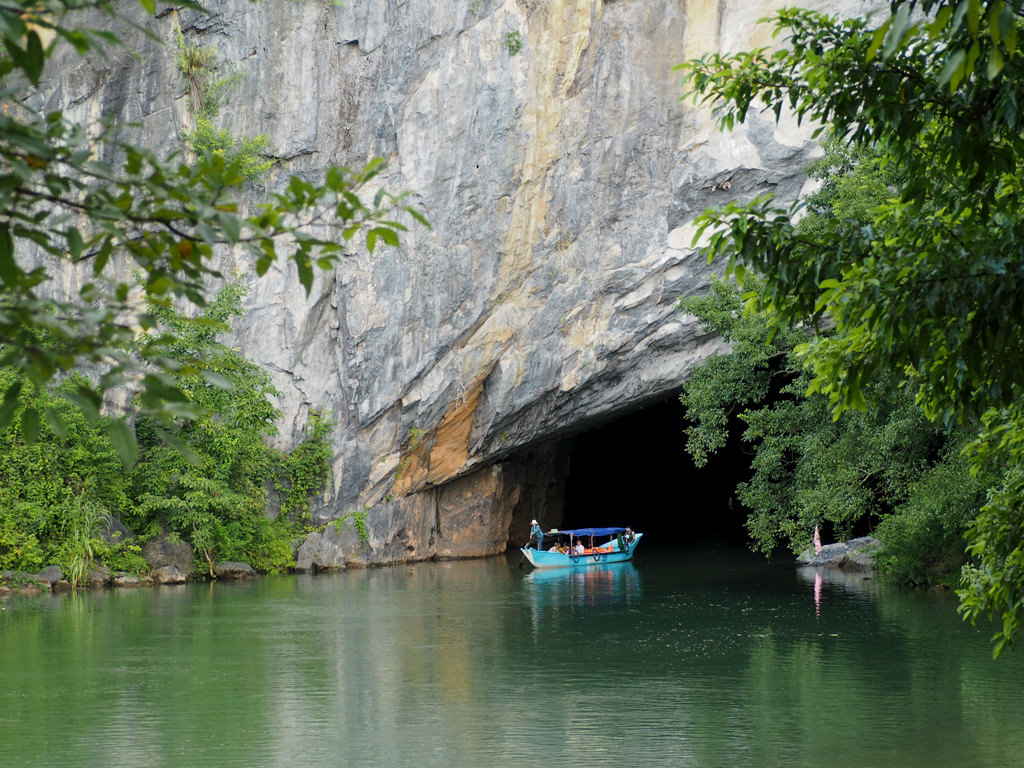
While the cave is almost 8 kilometres long, the boats only waft through the first kilometre of the underground river flowing through it before turning back and letting passengers out to walk amongst the ancient rock formations. Many of them have been given names with a majestic clang, such as Lion, Unicorn and the Buddha.
While the boat waits, walk out of the cave and follow the signs up never-ending stairs to the Tien Son cave, located conveniently right next door. As you ascend, the green plains and the murky river spread out underneath, offering a great vista to this part of the national park, before arriving to the almost hidden entrance of the cave. A looping walkway snakes through the cave to offer a closer look to its impressive stalagmites (rising from the floor) and stalactites (hanging from the roof).
It’s also possible to explore Phong Nha cave by kayak as part of an adventure tour.
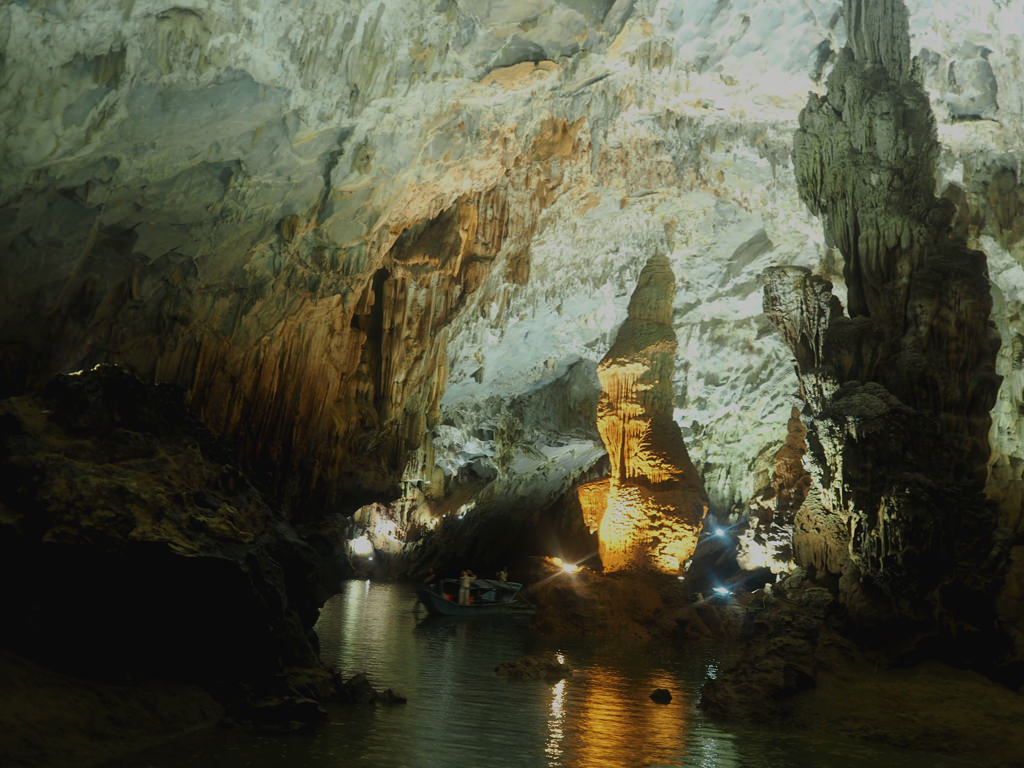
Paradise Cave
The longest cave, 20km south of town
Apparently Thien Durong – ‘Paradise Cave’ – is the cave you have to see if you only have time for one. Since opening to visitors in 2010 it has quickly become one of the most popular attractions of the park. Multi-coloured stalagmites follow you every step of the way as you plunge deeper into the dimly-lit cave, making you feel like walking on Mars.
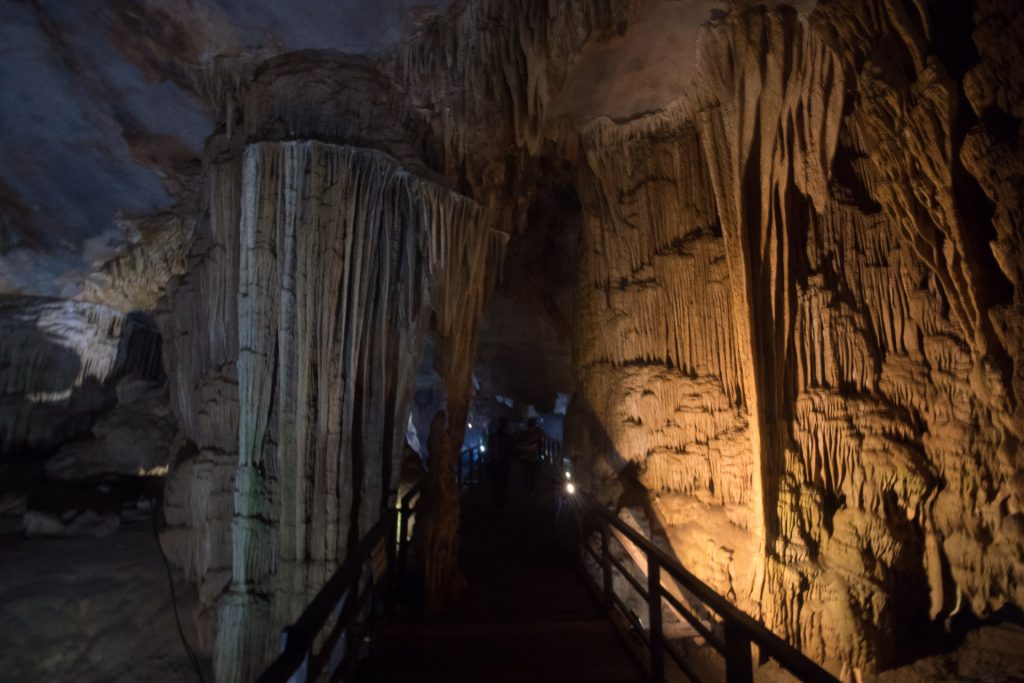
Some operators use the Paradise cave as a starting point for tours leading visitors deeper into the cave system, but the main part of the cave is better visited independently. I personally enjoyed going there by motorbike as the scenic roads go through part of the park.
What I didn’t realize until later is that you can actually do a full loop; you can cross the bridge in Phong Nha and head west on QL16, then south to Paradise Cave, then loop back into town via road DT20.
Dark Cave
A fun adventure zipline experience
Hang Toi, also aptly known as the Dark Cave, is one for the adventurous and can only be experienced with a group tour. No need to book beforehand – just show up and they’ll put you with the next group going!
This cave was essentially turned into a kind of obstacle course attraction and is great if you’re a backpacker wanting a fun activity.
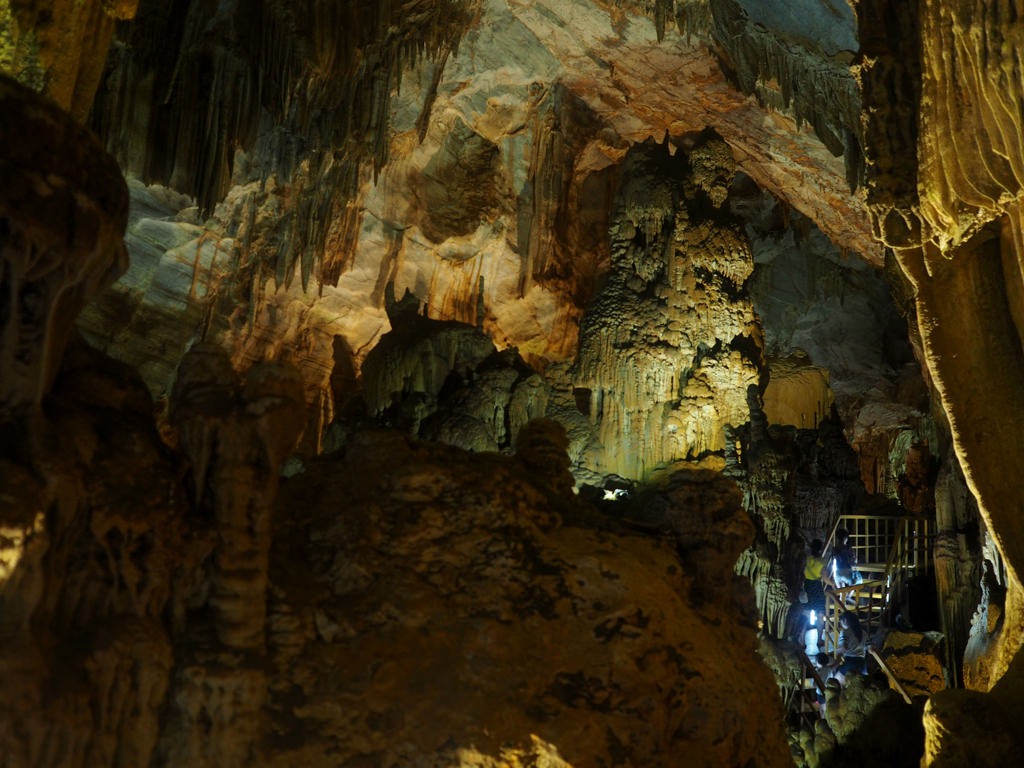
A brief but exhilarating zipline takes you to the entrance of the cave, where you don on life jackets and paddle into the water-filled cave. There is a reason you’re required to wear life vests and helmets with headlamps – the dark cave lives up to its name as beyond the mouth of the cave, there is very little light.
After leaving the life vests behind, the group progresses to the narrow tunnels deeper into the cave system until arriving to a cozy mud pool. The route circles back to the main cave where those who want are encouraged to swim to the other end of the cave and upon returning turn off their headlamp. You will be navigating in darkness towards the light of the cave opening.
Finally, you canoe to a small water adventure park, where more ziplines and different climbing challenges await.
Hang En
Camp inside the world’s 3rd biggest cave
Visiting this mindboggingly big cave was one of my favorite experiences in Vietnam. It’s located amid the jungle within the national park, away from any easy road access — making it one of the more adventurous but also most rewarding caves to visit.
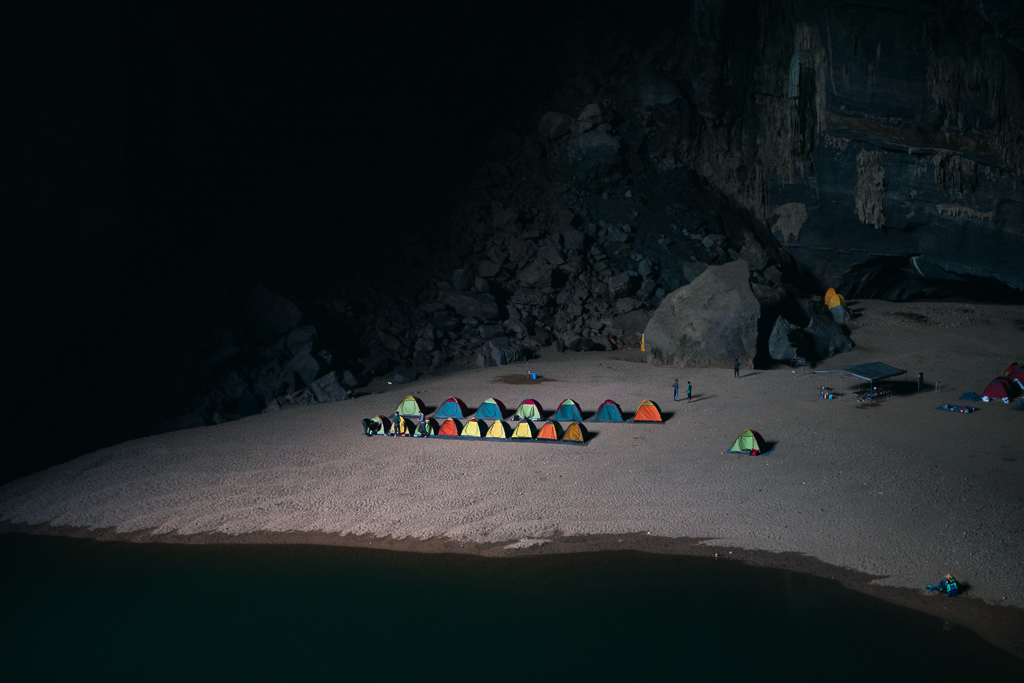
The only way to see Hang En is on a 2-day, 1-night tour, with Oxalis Adventure Tours being the only licensed operator.
With a cost of around $330 per person, it’s not exactly cheap by Vietnamese standards. However, the experience is absolutely unique and unforgettable. It’s also easy to appreciate the small-scale nature of these expeditions, with no more than 12 people on any given tour.
The expedition first takes you through the gorgeous scenery of the Phong Nha Ke Bang National Park, hiking for half a day via jungle paths and through rivers and streams (the water sometimes reaches up to your hips). Porters will carry tents, food, and some of your belongings to the cave, letting you stay there overnight.
You’ll get guided explorations of the cave before sunset and just after sunrise, between which you’ll spend the night inside the enormous main cavern, falling asleep to the sound of thousands of swifts who make it their home.
Want to know more? Read my full Hang En trip report here.
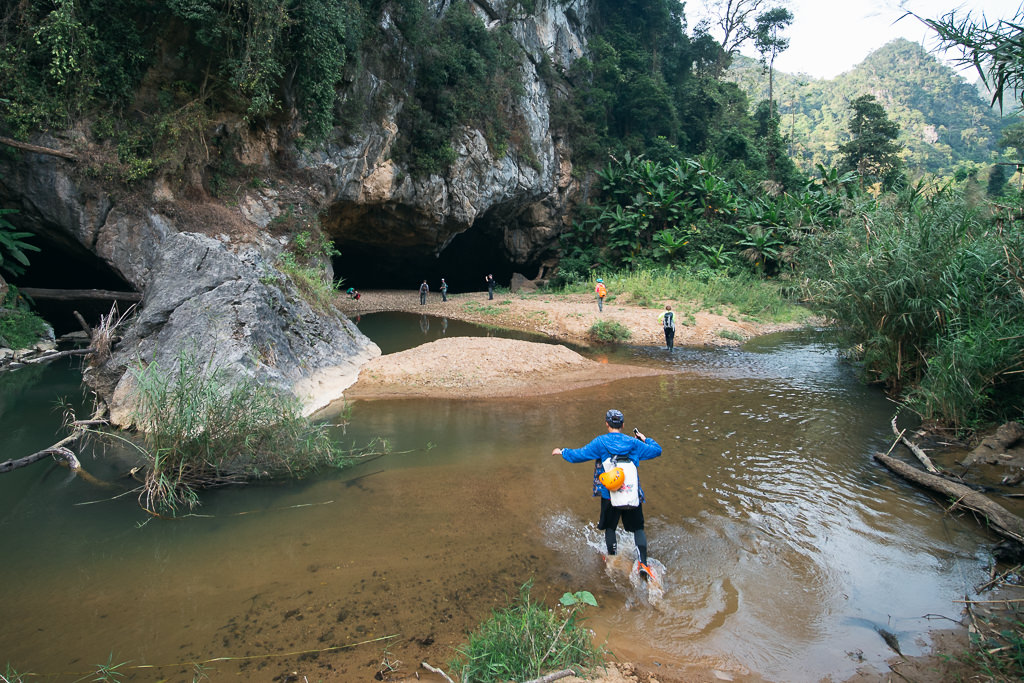
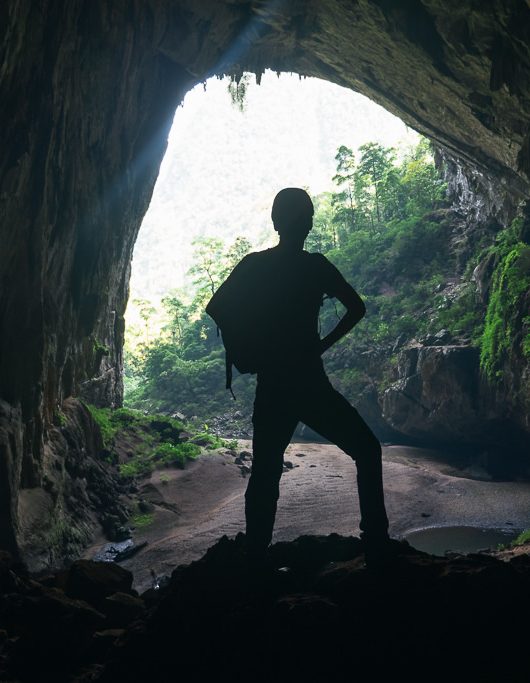
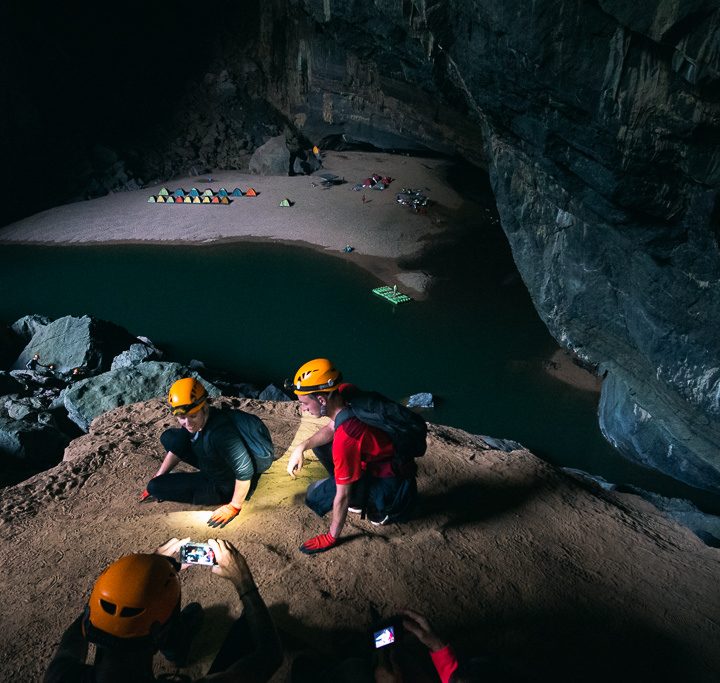
Son Doong
The world’s biggest cave (and hardest to reach)
Son Doong features heavily in any promotion of Phong Nha, with its terraced moss-covered rocks at the entrance lit by glorious sunbeams from above. Just know that Phong Nha’s poster-perfect cave is not one that many will actually get to see.
It requires high-level caving and rappelling experience, six days of your time, as well as a hefty 3,000 USD fee, so this marvel eludes the average traveller. There is nevertheless a long waiting list for this expedition.
Those with the funds and the opportunity to see it will also pass by Hang En cave on the way there.
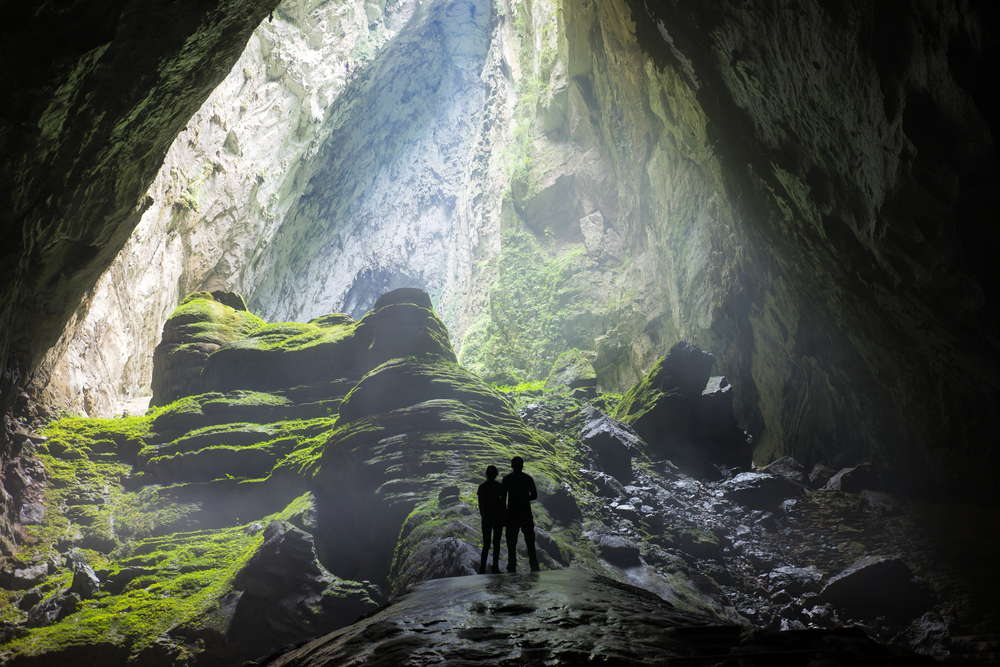
Other Phong Nha tours
Besides visiting the sights individually, you can also opt to go on an organized adventure tour that hits up some of the top spots, as well as some that normally can’t be done by yourself. Many of the tours include jungle treks, hidden waterfalls, or camping in the jungle.
The popular tour operators in Phong Nha include:
Oxalis does treks to the Hang Va & Hang Nuoc Nut caves, ideal for anyone who wishes to explore the untouched, rare cave formations (but at a friendlier price than Hang En). Their Tu Lan tour offers many activities such as jungle trekking, cave exploring, river cave swimming, and jungle camping.
Sustainable tourism
What’s so lovely about Phong Nha is that it’s chosen to develop tourism sustainably. The guesthouses and small hotels created a council through which they work together. The main tour provider, Oxalis, helped put Phong Nha on the map while also helping nature conservation and the local community. You can read more about how tourism developed over the years.
What else to do in Phong Nha
While the caves are unarguably the most unique attraction of the park, it is worth spending a day or two more exploring the area more closely out in the fresh air.
The dramatic green hills and the countryside surrounding them offer some great hikes. Unfortunately, most of them can’t be done independently, since the trails are often not clearly marked and the national park is still full of unexploded ordnance persisting from the Vietnam War. The local tour companies offer safe organized hikes, however.
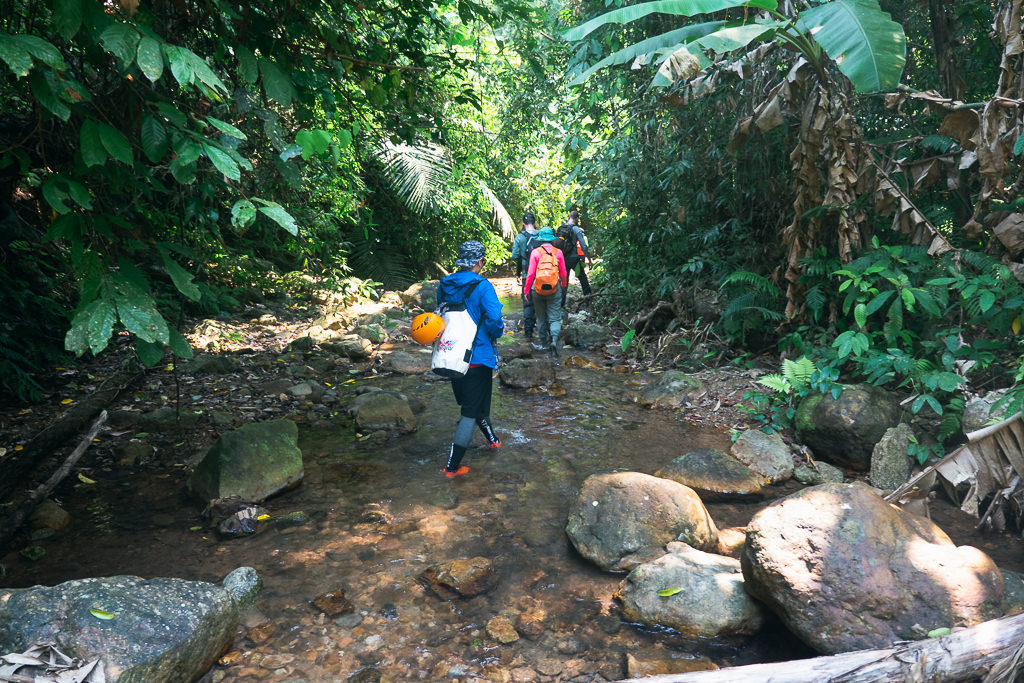
It’s worth exploring the area by road, especially if you can ride your own moped or motorbike. You can rent there easily in town for no more than 100,000 VND per day. There are women by the road selling fuel from small dispensers. There is also a gas station east of town, near Bong Lai Valley.
If you’re unsure on a bike, ask your accommodation for a local motorbike guide who can do the driving for you as you just take in the view.
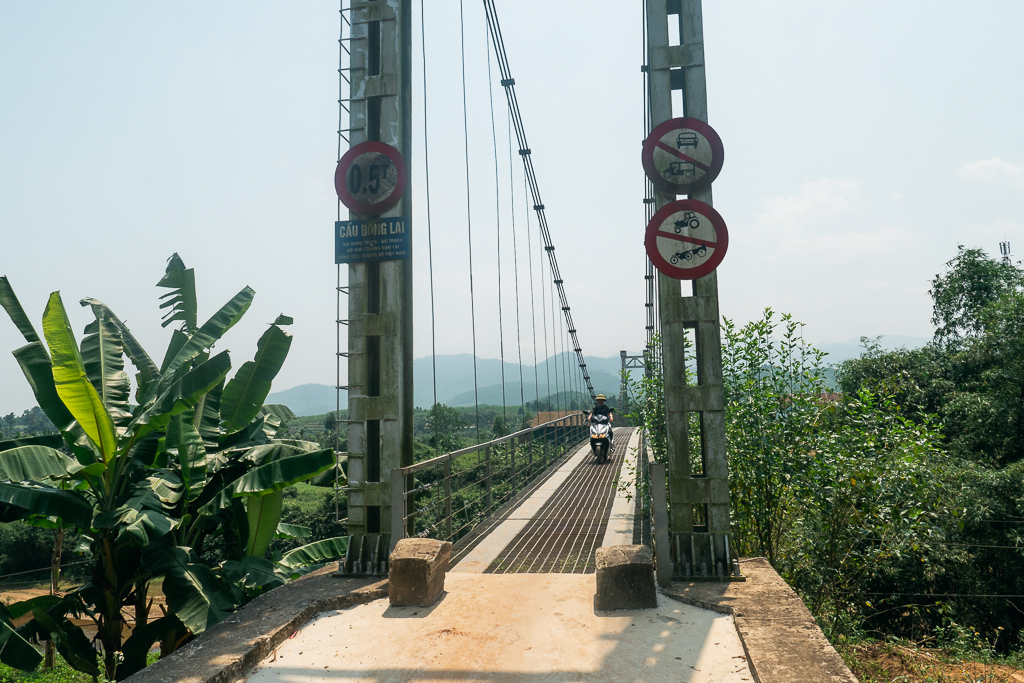
Visit Bong Lai Valley
This small valley east of Phong Nha (approx. a 20-minute drive) is a great place to relax for a day. The villagers worked together to turn it into a welcoming area, with several guesthouses, eco-farms, and eateries clearly signposted along the rural dirt tracks.
Some popular stops are the Pub With Cold Beer, the Bong Lai Rattan House, and the Bong Lai Swing Nature Farm. Each of these offers cold drinks, meals, and hammocks or swings to chill out. At The Duck Stop, you can play with ducks and make a wish by releasing a duck, which is meant to give you good luck.
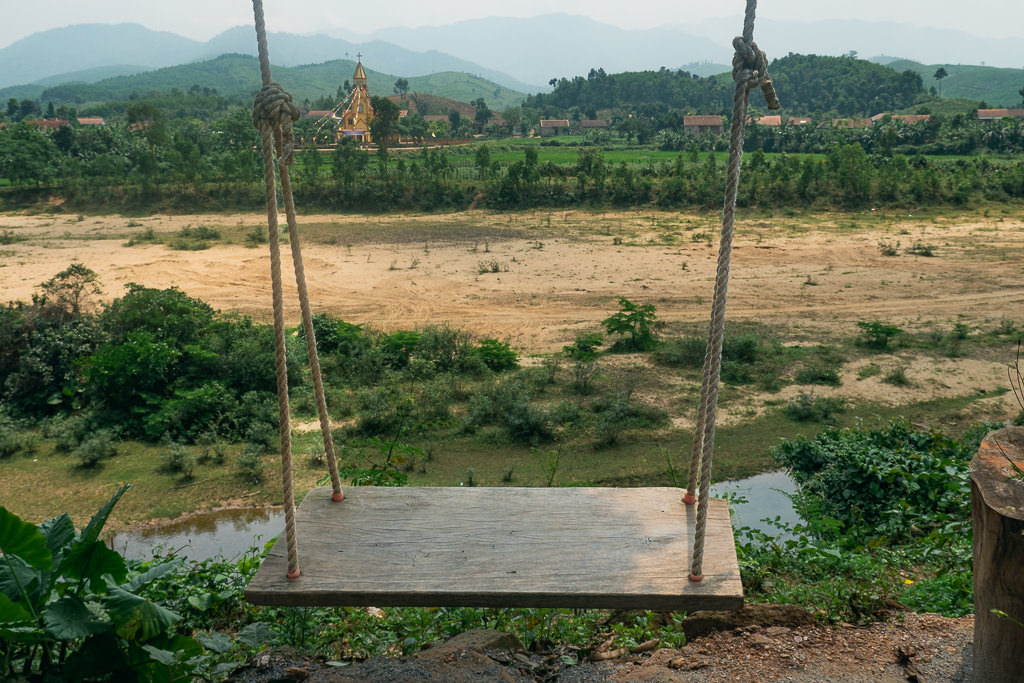
There is not much to do around here but to be lazy, or to be like the water buffaloes and chill in the river to stay cool. Some of the local joints offer tractor tubes to float in the river with.
Consider heading to Phong Nha Farmstay for the sunset; while their food is slightly more expensive than in the city, nothing beats sipping a Huda beer and gazing at the farmers mustering their cattle home as the sun sets behind the fields.
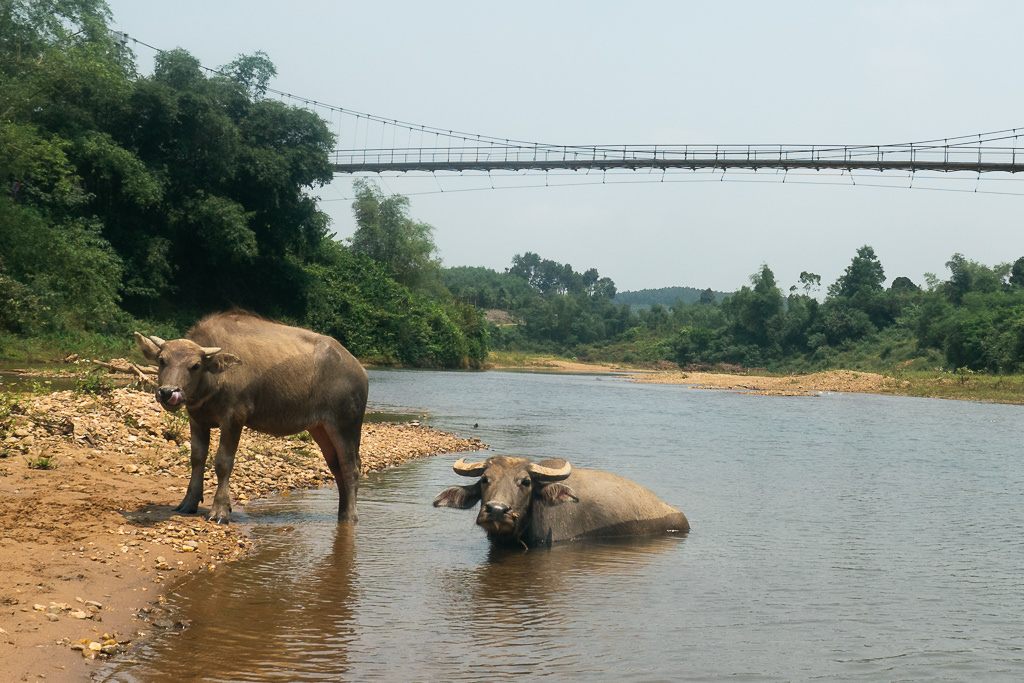
Drive through the National Park
A scenic drive through the Phong Nha National Park is well worth it, letting you feast your eyes on dense tropical forest and craggy karst mountains. You can either drive a loop that passes by several of the caves (described here) or you can venture deeper into the park by following road DT562 which cuts right through it.
Unfortunately, this road does not make a loop and eventually ends at the border of Laos. But you can drive about halfway to the small and scenically located Arem Village, then head back the same way.
There’s often nothing but lush unbroken jungle to see besides the road.
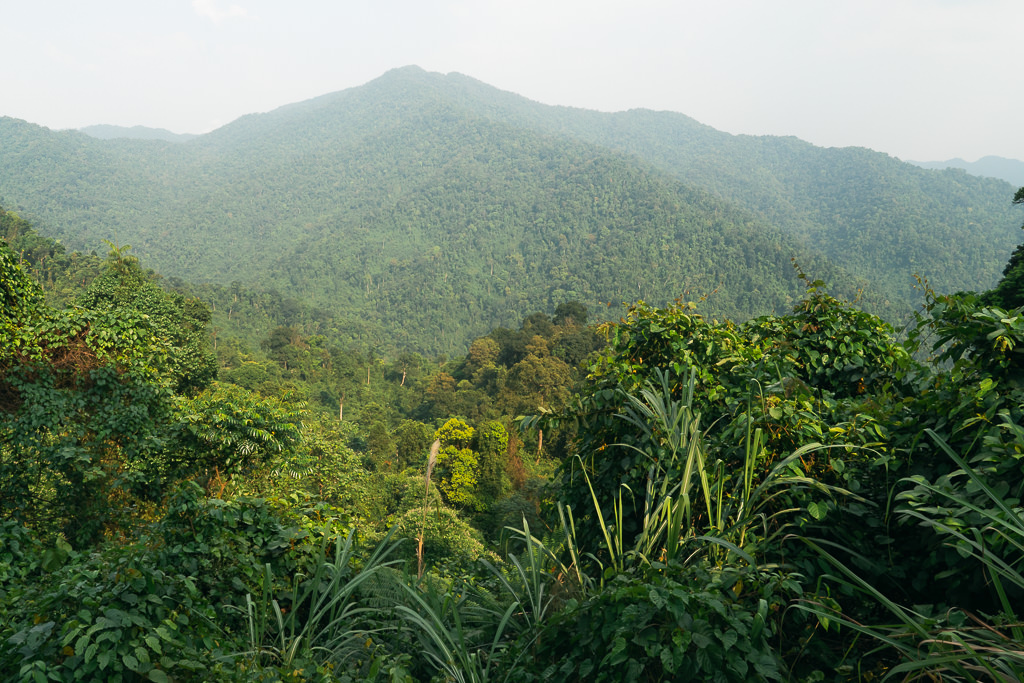
Hike to the waterfall
This stop along the road south of Phong Nha village is a bit oddly named. Even though it’s called the Phong Nha Botanical Gardens it’s not really what you might expect, even though various plants and trees are marked with signs.
The site is better known for a 2.5 km hike through the jungle, leading up to a watering hole and small waterfall. It’s not so well known with travellers, most of whom are busy visiting the caves on a short visit, so it’s a great place to go if you want some quiet time in nature.
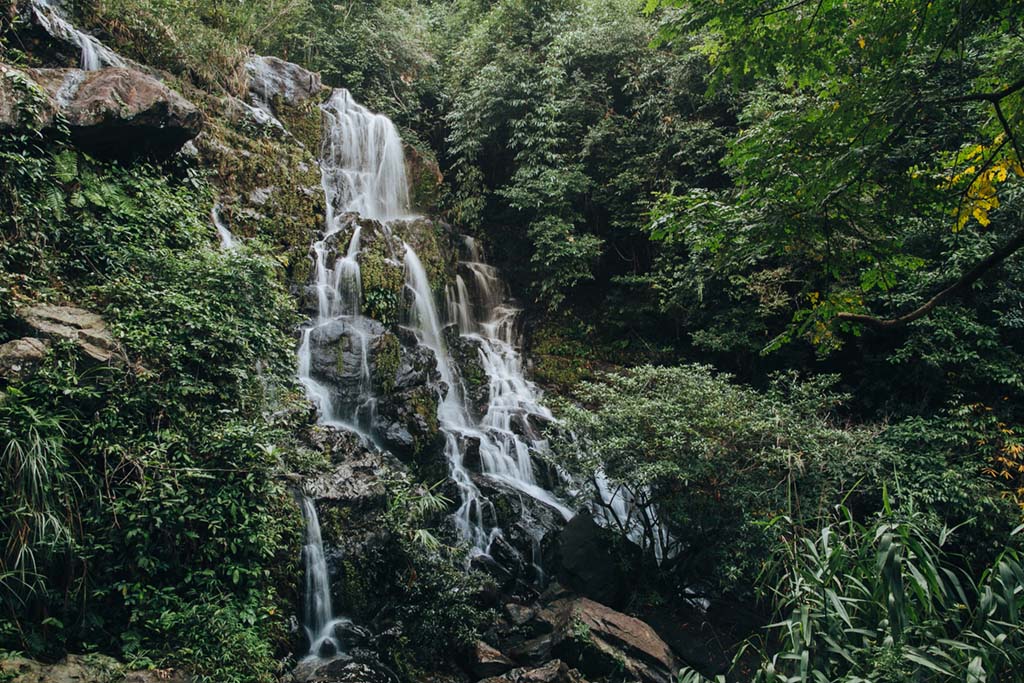
Where to eat in Phong Nha
Bamboo Chopsticks – Perhaps a little more pricey than other places in town, but at the same time it is popular among travellers for a good reason. Come in for a great breakfast or try the tofu stir fry. (Map pin)
The Best Spit Roast Pork & Noodle Shop in the World (probably…) – While this modestly named restaurant might not quite live up to its name, the spit roast is still excellent and the service great. (Map pin)
Lantern Vietnamese Restaurant – This restaurant serves good quality food for a good price. Try the Pho or traditional Vietnamese spring rolls. (Map Pin)
This guide incorporates elements from an earlier version written by guest writer Elina of Wayfarover. Images 6, 7, 8 & 9 were taken by Elina and copyrighted by her.
Some links may be affiliate links, meaning I may earn commission from products or services I recommend. For more, see site policies.
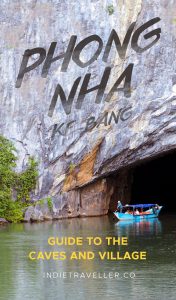

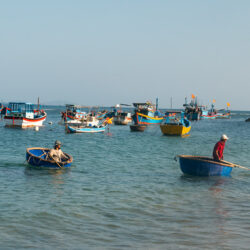
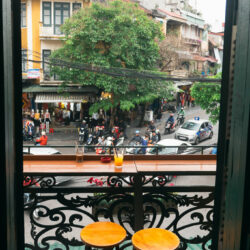




0 comments
Leave a comment
Your email address will not be published. Comments are manually moderated.